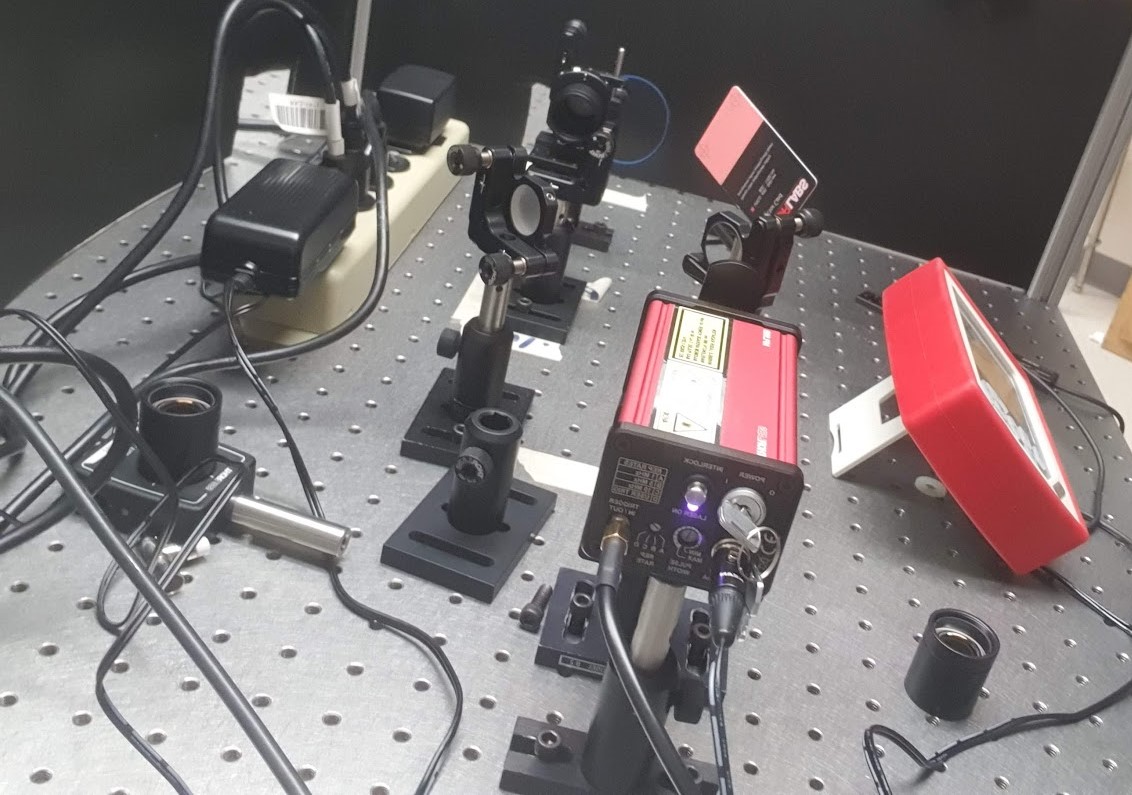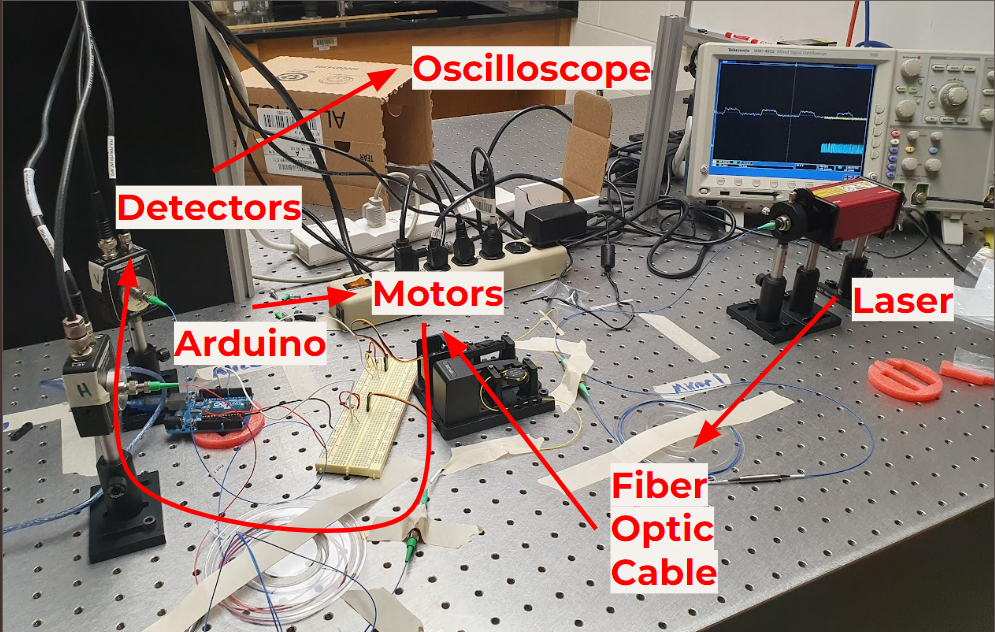Implementing Quantum Key Distribution using Photonics
By Katherine Jimenez, Alec Riso, Karthik Thyagarajan, Geoffrey Whiting
Quantum Key Distribution (QKD) is a revolutionary cryptographic protocol that leverages the principles of quantum mechanics to establish secure communication channels. Unlike classical encryption methods, QKD relies on the fundamental properties of quantum states and ensures that any attempt to eavesdrop on the key exchange introduces detectable disturbances, thus guaranteeing the security of transmitted information. Currently, the most viable way to implement QKD for communication is via photonics — namely, using phase-preserving long-distance optical fibers. The objective for our project is to implement QKD in photonics in a laboratory setting which will help advance the protocol's robustness and feasibility for practical use. Furthermore, we aim to investigate the difficulty of noise in implementing the algorithm over long distances.
Files and Resources
Files are coming soon!
Photo Gallery


Updates
June 3, 2024
Our QKD system was able to send an encryption key which matched the theoretical encryption key. This means our project was successful. Our specific method is limited to mostly educational applications, as the distance the key was sent was very small. The theoretical key sent was 110010001101000 and the key received was 110010001101000. Some of our biggest difficulties in this project were aligning the laser with the fiber optic cable and using the correct (non-polarization preserving) fiber optic cable. We could extend our project only sending one photon through the fiber, or by adding an eavesdropper.
